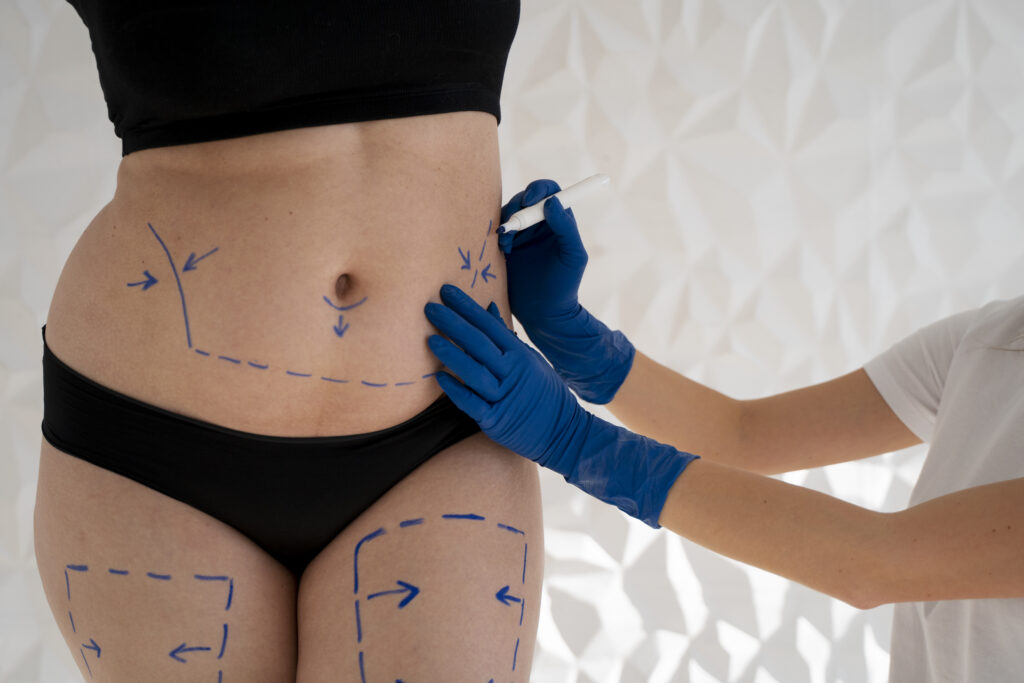Medical doctors and Surgeons
Body Contouring: reshaping the body and facing diastasis
Reshaping the body and sculpting it in the right areas, without being invasive: this is body contouring. It’s not only about the aesthetics, it’s about functionality. This kind of procedure does not include facial surgery, focusing on the abdomen, breasts and thighs. Body contouring is a technique that doctors tend to recommend to post-bariatric patients who, by undergoing restrictive or bypass surgeries, can lose up to 60, 70 or even 80 kg.
In order to solve consequences which may occur, from excess skin to loss of tone, one can intervene with dermolipectomies, that is, complete removals of body segments.
The typical body contouring patient

«The typical body contouring patient is someone who has lost a significant amount of weight, and thus has volumetric excesses. This is, sometimes, due to a pregnancy. Women’s bodies, especially if they gave birth to twins, could be significantly changed by these events. So they have a whole series of associated and connected conditions, including diastasis of the rectus muscles, a situation that requires a series of corrections», explains Valerio Cervelli, Professor of plastic, reconstructive and aesthetic surgery at the University of Rome Tor Vergata and presides over the specialising school for plastic, reconstructive and aesthetic surgery.
Diastasis of the rectus muscles is one of the reasons patients often cite as the reason they wish to undergo body contouring, especially following multiple pregnancies or a significant weight increase. This condition is often confused for an excess of weight, but it can be accurately diagnosed with a check-up that involves contracting the rectus muscles.
Professor Cervelli explains: «Diastasis, depending on the region, is recognized as a procedure that can be performed under the NHS, as is the case in our facility, for diastasis greater than 5 cm in diameter. In other regions, we have different entities that include this condition within the scope of what can be performed under the NHS or regional healthcare».
The function of body contouring
To address diastasis, surgical intervention is required. The classic procedure is called abdominoplasty: «We start by degloving the abdomen wall, especially around the centre – describes Cervelli -. Beyond moving the excess skin tissue, and applying a “redraping”, which means to redistribute the dermo-adipose tissue over the fascia, we perform a synthesis of the rectus muscles. The umbilical scar is then repositioned, especially in cases of umbilical hernias. The goal is to recreate the linea alba, that is, the tendon of the sheaths of the rectus muscles that tend to come closer together».
Correcting diastasis can have an effect on posture and all problems which are typically linked to it, like spinal cord hernias. In cases of umbilical hernias, where there is also involvement of the viscera, the situation worsens and often requires intervention in collaboration with a general surgeon.
Aesthetic and generic surgery working together for the patient’s wellbeing
The general surgeon must have knowledge and skills in laparoscopic techniques. Therefore, the stages of the procedure can occur without incision and tension. «Unlike a classic abdominoplasty, we will need to reduce the herniated loops. More often than the loop, it is the omental fat that herniates and becomes incarcerated within the hernia – says the Professor -. So we will need to reposition the tissues within the abdomen, after which the hernia defect will need to be closed. It can be closed simply with stitches, but in some cases, we need to place a mesh».

When the surgery is performed in collaboration, the goal is not only aesthetic but also to achieve proper functionality of the affected area; therefore, not just containment of the loops, but also reconstruction of the abdominal wall.
Diastasis is a condition that is often overlooked. Typically, it is women in the immediate post-pregnancy phase who face problems, including social issues. Very often, they lack support to manage these situations. This sometimes leads to delaying the intervention, resulting in dramatic situations years later. Correcting the condition does not imply the necessity of not having more children. Surgery can be performed even after a pregnancy that will not be the last, though there is a potential risk of recurrence of diastasis.
«After years, when diastasis has become established, it becomes difficult to treat. That’s why it’s important to emphasise that it’s not just an aesthetic issue but also a functional one. Many women end up with significant problems that require solutions over time», concludes Cervelli.




































